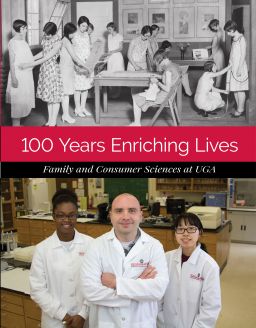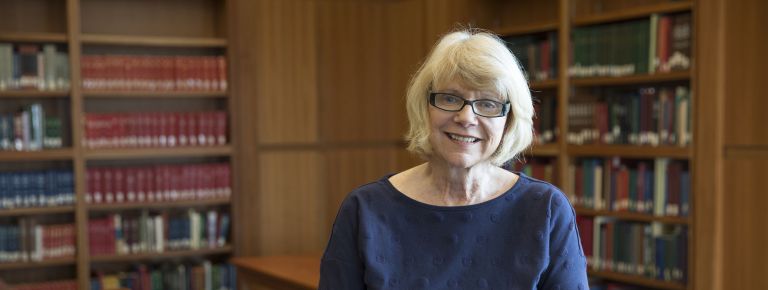Uncovering the Facts about FACS
So much information today is literally at our fingertips, just a few keystrokes, clicks, or a voice command away. Amazing? You bet!
When I needed to learn everything I could about the first 100 years of home economics and family and consumer sciences at UGA, the internet was a valuable tool. But it was not the only one I could rely on.
Preparing to write the centennial pictorial publication, “100 Years Enriching Lives: Family and Consumer Sciences at UGA,” meant uncovering the history of the college from 1918.
It required some old-fashioned detective work – spending a good bit of time in the library poring over reports, periodicals, newspaper clippings, diaries, awards, plans, artifacts, photos and correspondence.
Fortunately a good bit of material is available, some of it dating back to the very beginning of home economics at UGA.
There’s an amazing collection, stored in 97 boxes, within the vaults of the Hargrett Rare Book and Manuscript Library as part of two centuries of UGA archives and records.
Access to the collection is strictly controlled and monitored. Electronic devices – allowed. Pencils, pens, paper, drinks and food – not allowed.
But once you get accustomed to the stringent protocols, it’s easy to access the extensive and phenomenal collection that is so expertly preserved and protected for future generations to enjoy.
Many of the boxes contain documents filled with important facts and figures such as annual reports, memos and other official correspondence.
A subtle, yet distinctive, musty odor is released as many of the oldest cartons are opened. Scattered among these seemingly mundane resources, however, is a treasure trove of engaging, insightful and often personal pieces of history.
There are faded newspaper editorials denouncing the admission of women to the university in 1917.
Student posters, faculty and alumni letters both in support of and in opposition to changing the name of the college to Family and Consumer Sciences from the late 1980s are there.
There are handwritten, personal letters from Mary Creswell to her sister Edith, and friends Lurline Collier and Katherine Newton, as well as letters sent from Pakistan by Maude Pye Hood to her friends Mary and Edith Creswell.
Often, I found myself being transported back to a much simpler time.
Facts, figures, and dates are an integral part of a historical review. But history is not complete without learning about the people who lived it.
The letters, diaries and photographs provided glimpses into the lives of the dedicated women and men who have helped build FACS at UGA into the great college it is today.
It helped me understand who they were, where they came from, and what motivated their work.
And most importantly, it helped me tell a story of a century of commitment to excellence in education, research and public service.
The end result: 144 pages, more than 30,000 words and over 300 photos. As FACS begins its second century, it’s a story I’m confident will live on in the lives of those who love it and are committed to it.
Ordering Information
100 Years Enriching Lives:Family and Consumer Sciences at UGA
Hardback pictorial history book featuring a foreword from UGA President Jere Morehead and over 300 photos
$34.95
http://www.ugapress.org/index.php/books/100_years_enriching_lives/
orders@longleafservices.org


